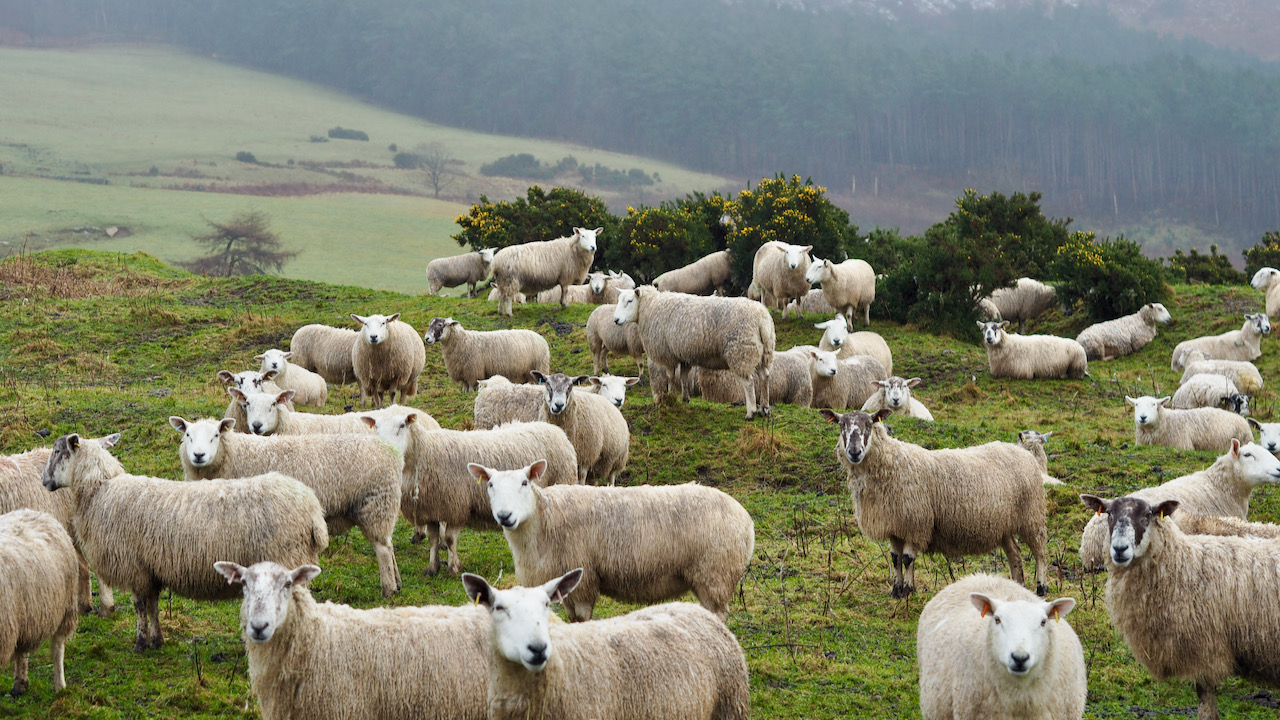Head down against the driving rain, I sensed unseen eyes upon me. The fleeces of these Aireyholme sheep appeared as fresh as a perm, even after, or more likely because of, the overnight deluge.
Despite dwindling numbers, sheep remain the predominant livestock on North York Moors farms. In 2016, the National Park boasted a staggering 296,000 sheep, outnumbering cattle fivefold1North. 2018. ‘A to Z: A Slew of Ss’, The Official Blog for the North York Moors National Park (The official blog for the North York Moors National Park) <https://northyorkmoorsnationalpark.wordpress.com/2018/08/06/a-to-z-a-slew-of-ss/> [accessed 9 February 2024]. This preference stems from both economic factors and entrenched tradition. Centuries ago, monks realised the advantages of extensive sheep husbandry. Thriving on the open moors, these animals demand minimal intervention when ‘hefted’ — naturally gravitating to specific moors and hillsides.
Across the moors, there are a variety of sheep breeds and of farming techniques. Blackfaces, renowned for their resilience and ease of hefting, enjoy widespread favour. Farmers also dabble in crossbreeds, dubbed ‘mules,’ which amalgamate Blackface durability with lowland breeds for enhanced wool or meat yield.
While ‘ram,’ ‘ewe,’ and ‘lamb‘ are commonplace sheep terminologies, Sheep farmers employ their distinct lexicon. A ‘tup‘ denotes a ram, a ‘wether‘ a castrated male lamb, a ‘hog‘ an older lamb, and a ‘gimmer‘ a young breeding ewe. And, I reckon, these ewes are all in lamb.
- 1North. 2018. ‘A to Z: A Slew of Ss’, The Official Blog for the North York Moors National Park (The official blog for the North York Moors National Park) <https://northyorkmoorsnationalpark.wordpress.com/2018/08/06/a-to-z-a-slew-of-ss/> [accessed 9 February 2024]

Leave a Reply